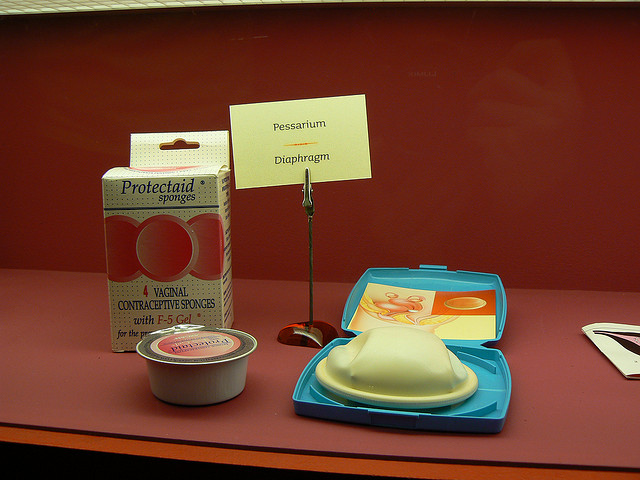
The diaphragm, though a time-proven completely side-effect-free method of birth control, is seldom talked about during sex ed. The diaphragm (right in the picture) is a barrier-method of female-controlled birth control that more and more couples are finding to be a good fit for their birth control needs.
With the rise in popularity of menstruation cups (such as the Diva cup, Moon cup, and others), women are becoming more comfortable with their bodies. Placing a diaphragm isn’t much different than placing a menstruation cup, and this
How does a diaphragm work as contraception?
To use a diaphragm, you put 1 teaspoon of spermicide (I use this natural brand most of the time, and this conventional brand during ovulation) in the middle of the dome (which will face toward the cervix) and also place a line of spermacide all around the outside lip of the diaphragm. After placing the spermacide, the diaphragm is inserted into the vagina, and placed up and over the cervix. The shape and material of the diaphragm creates a suction, keeping the diaphragm in place. Your doctor will show you how to place the diaphragm when you get fitted for one.
A diaphragm works as contraception in two ways. First, it is a barrier method, preventing the sperm from entering the cervix. If the sperm never makes it to the cervix, fertilization cannot occur.
The benefits of diaphragms as contraception
- The diaphragm can be placed up to 6 hours before intercourse, making it something you don’t need to think about later on.
- Unlike an IUD or hormonal birth control, the diaphragm is only used when you need it.
- When used correctly, the diaphragm is effective at preventing pregnancy.
- Does not disrupt the body’s normal hormones.
- Completely and immediately reversible if the couple decides to try to become pregnant.
- Can be combined with other methods (fertility awareness method, withdraw method) for increased protection.
- Less intrusive than other barrier methods. When placed correctly, both partners usually do not notice it.
Risks associated with hormone-based birth control
How to get a diaphragm

